There was the first one we lost that wriggled on a thread of pink gum until yanked loose, and left itself bloody and warm in our tiny hands. There was the blackened cavity that ached in our back molars until novocain numbed our face. There were the taught braces that reshaped our broken smiles. They’re the only bones we ever see.

There is something utterly unsettling about teeth. The tiny pieces of skeleton left vulnerable when exposed by two layers of skin, teeth lend themselves as the most horrific touchstones in two distinct pieces of visual media from the last few years: HBO’s Sharp Objects and Syfy’s Channel Zero: Candle Cove, in which young children are murdered by their own peers, their teeth extracted and utilized as symbols of power and markers of the abject. But from the Mouth of Sauron in LORD OF THE RINGS: THE RETURN OF THE KING, to the tooth fairies in HELLBOY II: THE GOLDEN ARMY; the Sugarplum Fairy in THE CABIN IN THE WOODS or the dental torture in MARATHON MAN, teeth have been used to elicit discomfort and horror in pop culture for years.
For Sharp Objects and Candle Cove, teeth embody two very different but intrinsically linked perversions: primitive removal and intentional malformation, both at the hands of corrupted innocents, in whom the loss of teeth would organically symbolize growth and maturation. Though teeth can already be linked to a host of human fears (our existence and inception into the world, our eventual death, our inherent primality; our need to consume and our potential to be consumed), their mutation in and brutal extraction from children, by way of children, enhances their naturally occurring unease. Anxieties of mortality, sexuality, and humanity are at play in these respective removals and the way that the teeth are subsequently utilized, and it ties into the real-life anxieties associated with teeth as well.
Perhaps, it’s due to the universal nightmare of teeth falling out, or the loss of these bones at a young age giving way to our first associations with body horror, but teeth are innately horrid things. They peek out, white and small and pure, amidst thick layers of slippery wet skin, and the ease with which they first leave are bodies is as unnerving as it is aching. Such small things cause so much pain – a pain we must all endure. We’re united by it. As we grow older, teeth become tough, harder to extract, and they require a great deal of strength and perseverance to do so. But teeth are, themselves, a reminder of our own mortality. We are born without them, we lose them; they grow back stronger, more permanent, but many of us may lose them again as we march closer towards death.

In Channel Zero: Candle Cove, Mike Painter’s dead brother – gone unhinged at the hands of a sadistic, mind-controlling children’s television show – exists in the world only as a grotesque, supernatural being. Eddie Painter is perpetually a child, but covered in endless layers of teeth, fed to him by a woman who has deified the circumstances of his passing, and which crunch and crackle with each slight movement he makes. In the final moments of Sharp Objects, Camille Preaker is met with an unwelcome discovery. Though the case of the two murdered girls from her hometown was wrapped in the neat bow of placing blame on her horrid, Munchausen by proxy mother, Adora, the series opens another wound in its final scene. Camille finally sees that the ivory look-alike floors of her half-sister Amma’s dainty dollhouse are not smoothed down in plastic or resin, but in rows and rows of flattened teeth – the very ones the teenage girl yanked out from the heads of those two little girls that she murdered.
Amma Crellin (Elizabeth Scanlen) is a girl weaned on poison and purity. Third daughter to Adora Crellin (Patricia Clarkson), Amma is a precocious, vicious child who hawks teenage taunts like finely aged venom. A master manipulator, Amma gets others, both teens and adults alike, to do her bidding with ease while maintaining the façade of childhood innocence, so expertly believed by Adora and Adora alone. She wears long dresses and cardigans at home at Adora’s behest, but dons short-shorts and low-cut tops on the streets – her virtue merely a costume. But Adora is the one who cultivated this false image of goodness while breeding a monster at heart, feeding Amma homemade “remedies” to induce illness and childlike helplessness in her in a case of Munchausen syndrome by proxy. It’s the same disease that killed the older sister Amma never knew, Marian, at a young age; the same disease that oldest sister, Camille Preaker (Amy Adams), was too unruly to be imprisoned by.
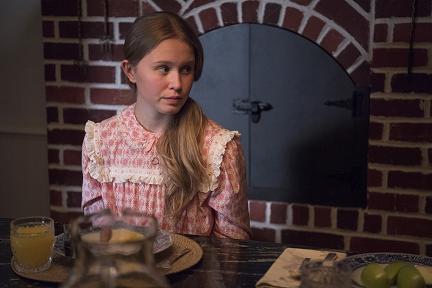
Thus, the fragility of Amma’s paper-thin innocence as she comes of age is juxtaposed against her mother’s impulsion to contaminate Amma for years, creating a child emboldened by her own perceived virtue who only understands the language of cruelty – the only language she was ever taught. Amma’s savagery is not the product of teenage rebellion or inherent adolescent willfulness, but of deep-seated evil, fortified and emboldened through the other members of her family like an inherited illness
And while Amma can get away with most anything – murder, first and foremost – true innocence is something she covets. For Amma, teeth – the teeth of two young girls, to be exact – are tokens collected out of both envy and insecurity; out of a desire to turn weakness into power. Through her abuse, Amma was robbed of a true childhood, fed bitter malice in tangent with ice cream and candy. The girls that she murdered, Anne and Natalie, were tutored and cared for by Adora, in Adora’s own words, as a way to make up for the failure she perceives as her upbringing of Camille. Anna and Natalie were tough, unruly little girls. They bit and fought back, they were tomboys, they were pistols. The kindness Adora expended to these girls, willful, carefree, and disobedient to a fault, is part of what drove Amma to kill them, as if Amma’s own cruelty is consciously her greatest insecurity. Girls can be vicious as a part of growing up. Amma’s viciousness was only ever a product of her abuse.
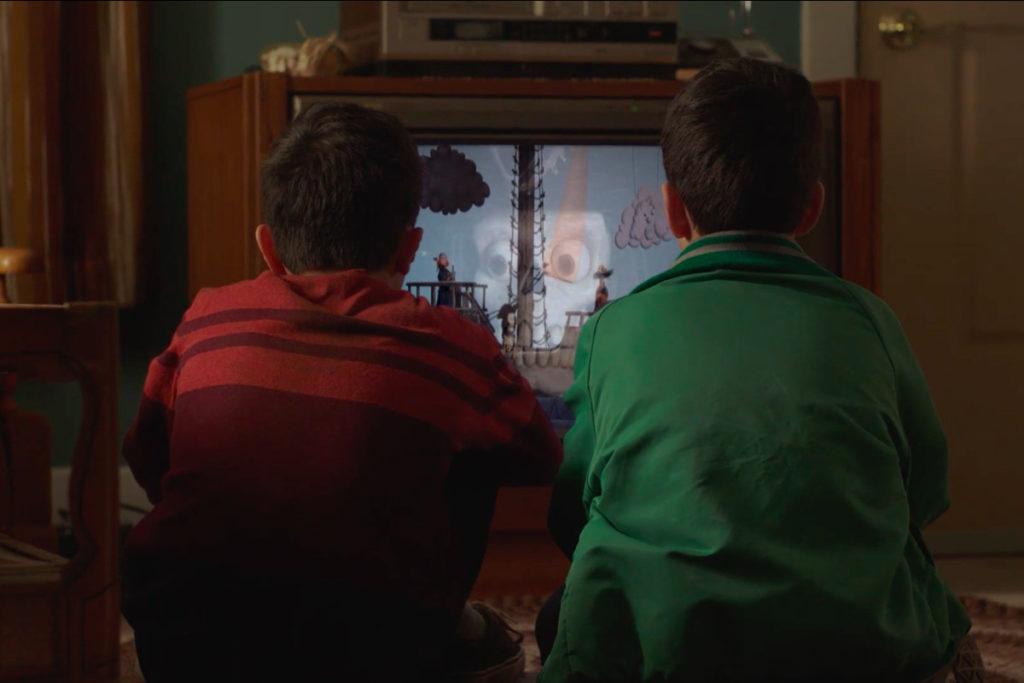
For both Amma Crellin and Eddie Painter, their own coming of age is something that has been impeded, while, simultaneously, their innocence has been lost to them. While Amma lost hers at the hands of her abusive mother, Eddie lost his at the hands of a supernaturally occurring children’s television show. Lured into violence and hate by the mysteriously-broadcast “Candle Cove” – revolving around the sea-faring adventures of a handful of unnerving puppets – Mike Painter watched his identical twin brother slowly succumb to the hypnotic power driven by forces beyond human comprehension. But Eddie wasn’t the only child to disappear from their hometown of Iron Hill, Ohio – five other local children went missing, and Eddie’s was the only body never recovered.
Now, nearly thirty years later, Mike Painter is being called back to his hometown by the very forces that took Eddie away from him. Mike returns and, suddenly, “Candle Cove” is making its way back to home television sets and children are disappearing again. And while suspicion and paranoia begin to engulf Iron Hill with all eyes set firmly on Mike, it’s long-dead Eddie who is wreaking havoc. It’s Eddie who’s calling Mike back, their unfinished business between one another begotten from the fact that Mike killed Eddie in cold blood when they were still children, to keep Eddie from turning into more of a monster than he already was. As Mike eventually discovers, Eddie presently exists both as a spirit in between worlds and as a physical presence on earth – the body of which is covered in revolting layers of children’s teeth.

But Eddie’s submitting to the powers of “Candle Cove” was not a coincidence, for both Mike and Eddie spent their days engrossed in the controlling program and yet only Eddie found himself particularly taken by its influence. There was a natural aversion in place towards him and his brother growing up and growing apart, as Eddie grew increasingly jealous over Mike spending time with a young girl named Jess, asking that Mike never love her more than he loves Eddie. “Candle Cove” was able to infect Eddie more readily because Eddie was primed to be corrupted – he already didn’t want to grow up, and “Candle Cove” granted him that desire.
Loss of innocence and an inability to come of age are fundamentally tied to Eddie Painter and Amma Crellin within their respective stories. Adora longing for Amma to stay a little girl forever by abusing her produces the complete opposite effect; Eddie wishing for himself and Mike to stay best friends and play their never-ending card game forever manifests as a refusal to grow up. And though Amma’s stunted maturation was entirely against her will – Eddie quite easily slid into his role of the villain, on the other hand – both are monsters living in children’s bodies who simultaneously defile innocence while coveting it like a precious metal, as something they either want returned to them or something they never want to let go of.

In Sharp Objects, it is hypothesized by Detective Willis (Chris Messina), that the act of removing the teeth of the little girls is sexual for whoever the killer is, and that the killer must be male. This purported male killer doesn’t have sex with the bodies, either before or after the murders, but instead he removes the teeth. This extraction must symbolize something inherently erotic and violating, like the removal of a woman’s limbs in the film BOXING HELENA. And while Amma’s removal of the teeth is not outwardly a sex act, it is an act of removing the girls’ greatest source of true virtue. Not their virginity or their purity, but their small, white, vulnerable bones – perhaps even some of their baby teeth, which keeps them linked to the most innocent part of their human development. It’s an act of defiling without sexual violation.
Thus, when Amma places the teeth in her dollhouse, her most prized possession, it’s like she’s transferring the girls’ innocence to herself; these symbols of purity now imbedded within a cornerstone of stereotypical girlhood. Eddie covering his body in teeth can be seen as being meant to help him retain his youth, by tacking on these little pieces of one’s childhood, forever ageless and stunted like the children’s teeth themselves. Amma and Eddie’s treatment of innocence is almost paradoxical – yearning for this thing they’re already supposed to have by default by utterly perverting it. In this way, the teeth of Sharp Objects and Candle Cove become abject, horrifying. The goodness of children tainted by children, extracting a part of their bodies intrinsically linked to the most vulnerable era of their lives before they’re ready to be removed.
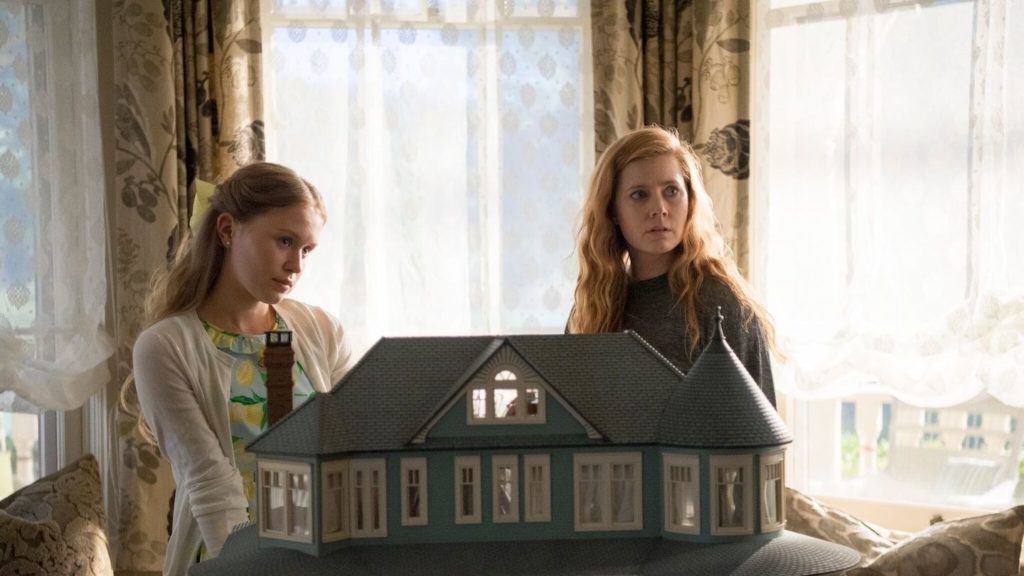
The universality of tooth pain, of tooth loss and removal, of lying flat on your back with your mouth open wide, as your gums are poked and prodded and warm blood mixes with saliva; it all feeds into the way teeth can be used to unsettle us. Not only do teeth mark a uniting human vulnerability, but they are constant reminders of our mortality. “One of the most incomprehensible mysteries is how we are, for lack of a better word, trapped inside of our own bodies,” writes author Becky Belzile for Bloody Disgusting. Indeed, when stripped away of varying layers of nuance, Amma and Eddie are not only at war with their innocence, but they are afraid of their own bodies. Eddie fears what his body will become – old, alone, without his twin brother – Amma fears both what her body has already become, and also what it hasn’t – a helpless vessel for her mother’s abuse, versus a normal, functioning teenage body.
So, teeth are linked to our impermanence, as well as our innate primality which we try so hard to overlook. The mutilation or misplacement of these specific body parts reminds us that our bodies are ephemeral, created to destroy and to be destroyed. According to Richard Nicoletti J.D. for HuffPost, since Western cultures vehemently fear death, tooth loss can be a reminder of, or a metaphor for our own demise. So, as it is with most depictions of body horror in film, any fear and discomfort we derive from it is linked to a fear of our selves. We’re reminded that all we are is just a bag of bones when we hear the sound of crunching and rattling as the Tooth Child feasts upon anther handful of stolen children’s teeth. We’re reminded of the ease with which our bodies can be damaged and deformed when we realize all it took was a hateful teenage girl to rip teeth out of someone’s head. Those teeth are us, and we, in turn, are the teeth.
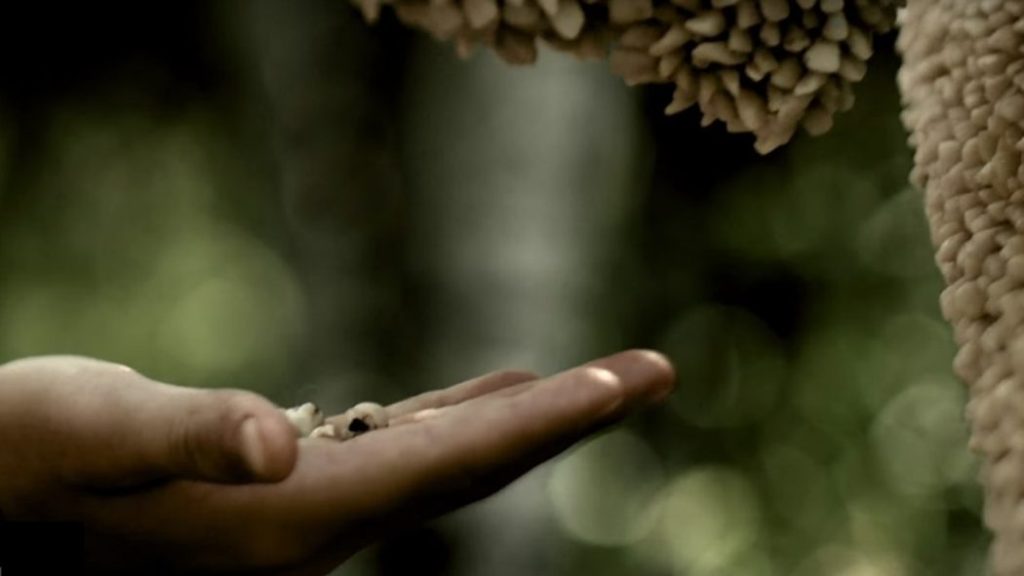
While most fictional body horror hinges on altering our bodies to unrealistic extremes, as with films from directors like David Cronenberg or John Carpenter, the existence of teeth themselves are body horror on their own. They are bones that are meant to literally fall out of our head – little pieces of our face that one day end up in our hands, covered in bodily fluids. To see them embedded anywhere other than our mouths (as with the Tooth Child), feels unnatural and wrong, just as it feels wrong to know that they were forcefully removed by a child in an act of murder. But teeth keep us naturally close to our mortality at all times, and it’s why their distortions in Channel Zero and Sharp Objects feel so incredibly striking. To see innocence not only run parallel to death, but actively engage with it, is chilling. It is seemingly a violation of what feels like the natural laws of the world.
When further boiled down, teeth can be seen as representing two very distinct phases in our lives: our birth and our death. In between that, they rattle around in our heads, ripping through flesh, grinding sustenance into dust, while being polished and tended to like fine china as they cause us immense pain and discomfort. If we lose one as adults, it is not coming back. And one day, long after we’re gone, there won’t be any of them left at all. When we smile, they are exposed – susceptible to harm. Until then, they remain dormant, waiting, beneath two folds of moist skin.
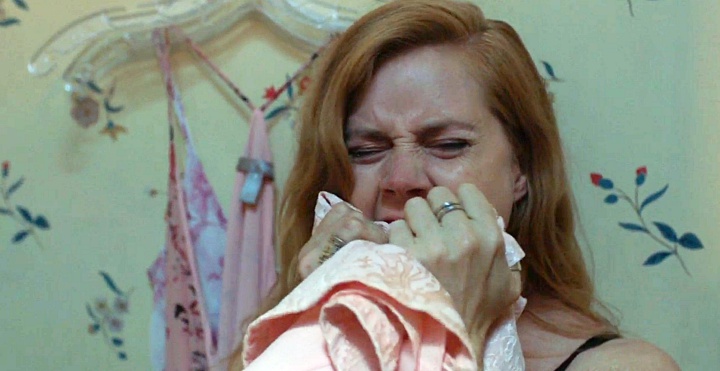
As Camille Preaker unearths in horror the truth of what Amma did to those two young girls, little Amma appears behind Camille in the doorway. Instead of lunging at her sister, doing away with to keep her from revealing the truth, Amma utters quietly, almost a whisper, “Don’t tell momma.” In this moment, Amma Crellin becomes only a child again, afraid of her mother finding out that she did something wrong. Amma Crellin is a monster, but she’s also a little girl, as is Eddie Painter – that is, a vulnerable boy protected under an armor of corruption, led astray by powers beyond his control. Both of them are still children, a mask of innocence hiding their own depraved nature, as we are still carnal, killable beasts hidden under our own evolved civility.
And, perhaps, teeth unnerve us so because, ultimately, they remind us of the truth. Teeth are both precious and hideous; vicious and delicate, and the same can be said for the murderous children of Channel Zero: Candle Cove and Sharp Objects. Amma and Eddie are exactly like the teeth that they’ve corrupted. Perceived purity masking carnal desires. A spotless, white veneer hiding innate wickedness. Inhumanity lurking underneath our façade of human.
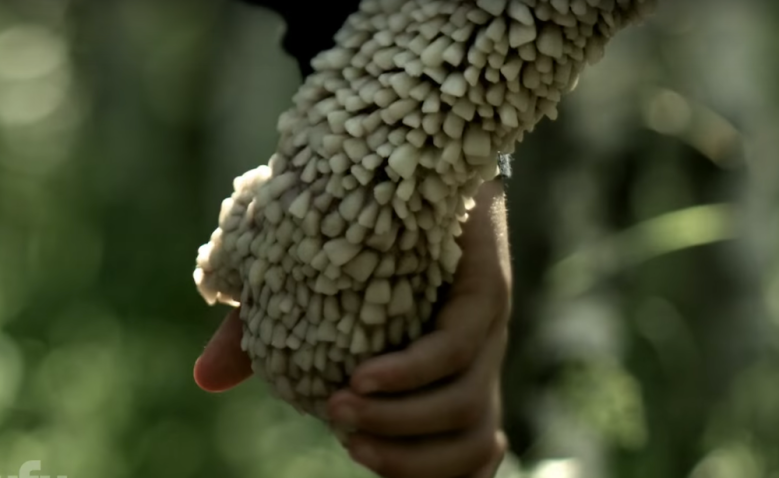
Tags: Adaptations, Amy Adams, Books, Canada, Chris Messina, Craig William Macneill, Don Mancini, Eliza Scanlen, Elizabeth Perkins, Fiona Shaw, Gillian Flynn, Harley Peyton, HBO, Henry Czerny, Horror, Jackson Hurst, Jean-Marc Vallée, Luisa D'Oliveira, Lulu Wilson, Madison Davenport, Marti Noxon, Matt Craven, Miguel Sandoval, Natalie Brown, Nick Antosca, Patricia Clarkson, Paul Schneider, Shaun Benson, Sophia Lillis, Syfy, Taylor John Smith, Teeth, Television, TV, Will Chase

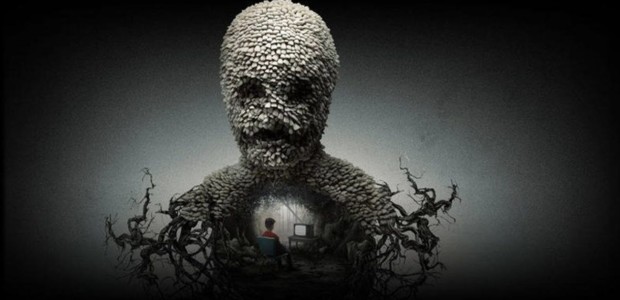
No Comments